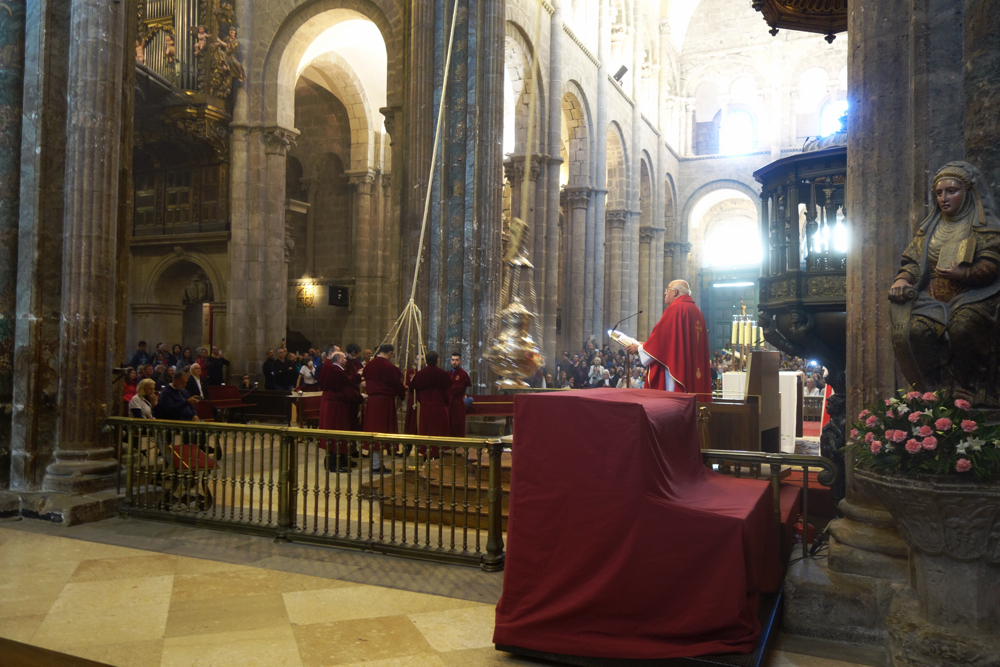We left Pedrouzo at a quarter to seven, our earliest departure yet, only because the Camino is its most crowded on this final leg we and we like to be alone. We followed a thin little woman in a long skirt who was walking briskly with a head lamp on. She lit enough of the trail for us to see the things we could trip over. A guy joined her for a bit and we listened to their conversation. He told her he believed in God. He believed in Jesus but he no longer believed in the Church and then he moved on. We stayed with her for the first hour and then ducked into a coffee shop along a road that we crossed. The woods were ghostly beautiful under the stars. After coffee Peggi used the flashlight on her phone and by 8:30 the sun was starting to come up.
We stopped for a second cup in San Lázaro on the outskirts of Santiago. We had no time to waste because we were trying to get to the Pilgrim’s mass at noonat the Cathedral. We found our hotel, checked our bags, and headed over to the Cathedral. On high holy days or when a wealthy pilgrim pays the church, they will bring out the big incense burner, the Botafumeiro. We were lucky. They swung it today.
At lunch, our dinner, we sat with a Korean woman who had just finished the Camino. She went to school in Boston, worked in Sweden and London and is now living in France. She told us walking the Camino and interacting with and observing the people on it had restored her faith in humanity. And then she shared her observations of the many nationalities. The Asians were way too polite. The English are brutish. Americans are boring. But the French, she felt, were deep. “They are not afraid to be naked.”
Two of the twelve apostles were named James. Saint James the Greater is considered the first apostle to be martyred. King Agrippas ordered him to be beheaded in 44AD and his head is said to be buried under the altar in the Armenian Apostolic Cathedral of St. James in Jerusalem. So how did he become the patron saint of Spain and Portugal? He is said to have preached the gospel in Iberia as well as in the Holy Land. After his martyrdom his disciples carried his body by sea to Iberia to the coast of Galicia and then inland for burial at Santiago de Compostela. We started the Camino in San Jean de Port, France and followed it here. Today we viewed the tomb where the majority of Santiago’s remains are said to be and we received our certificate, the “Compostela.”
Leave a comment
